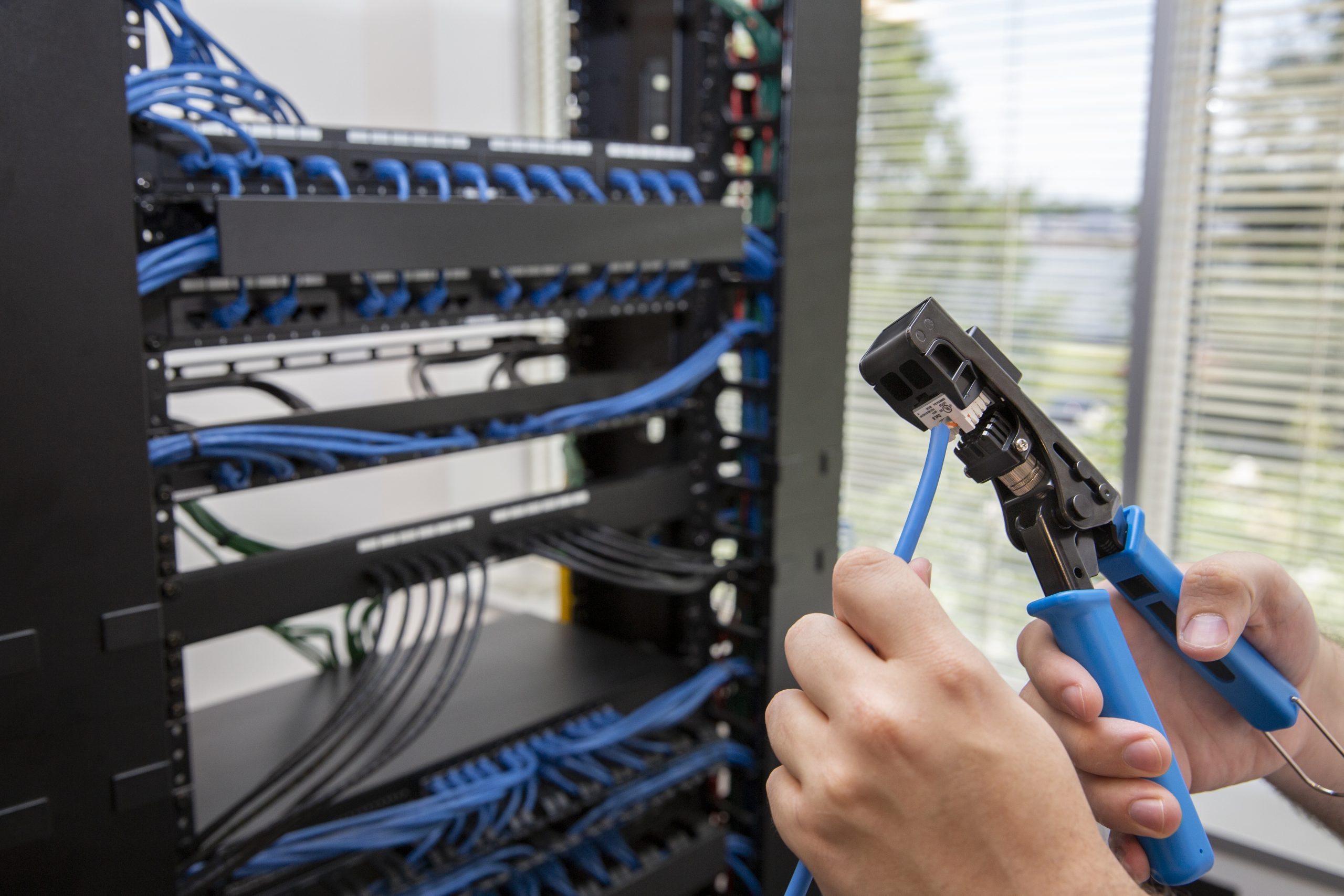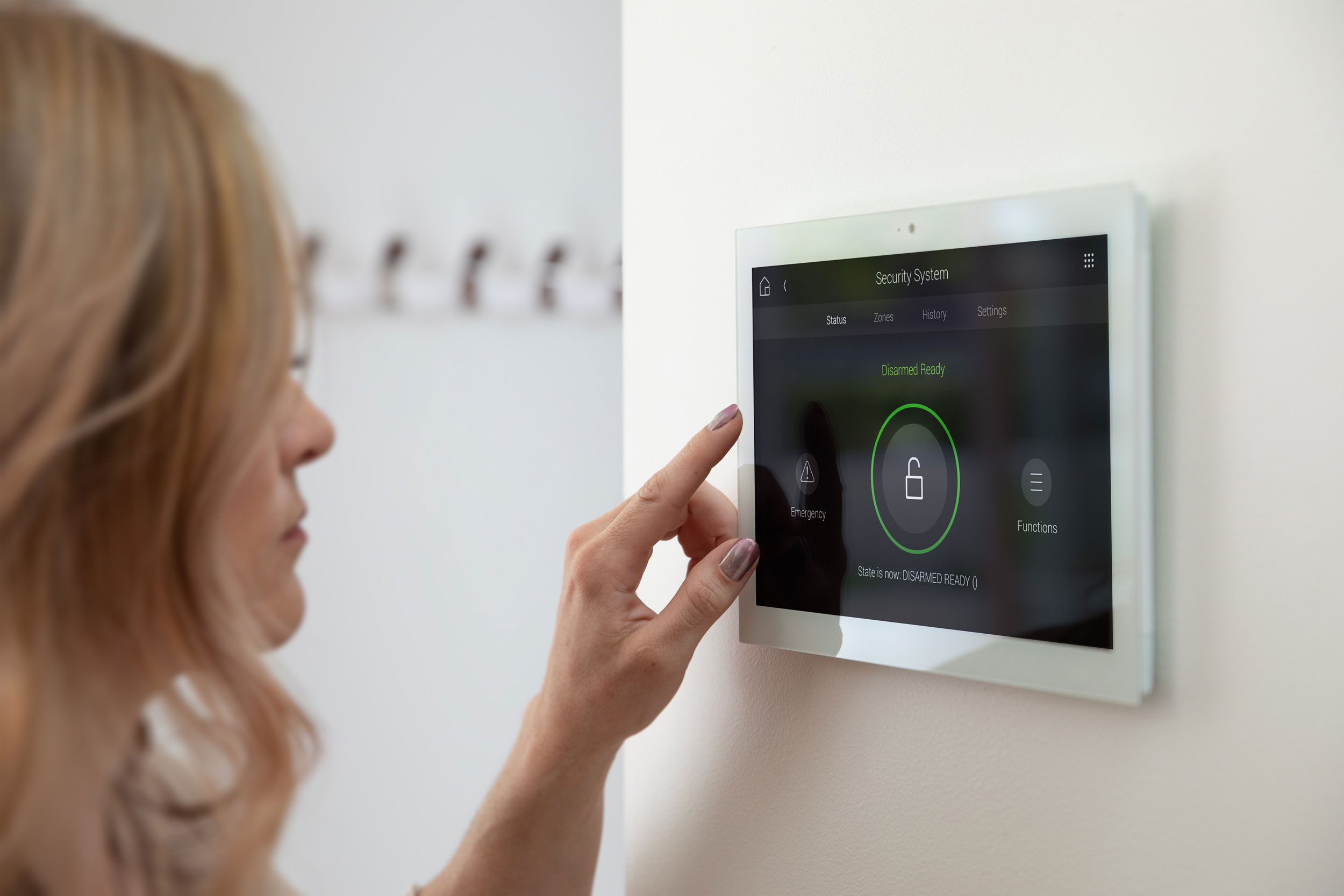Creating a Fully Integrated Smart Home
Transforming your living space into a fully integrated smart home can enhance comfort, convenience, and security. At Programmed Living, we aim to guide you through the process of creating a smart home that meets your unique needs and lifestyle. This comprehensive guide will help you assess your current setup, select the right devices, integrate them seamlessly, and maintain your smart home for optimal performance.

Assessing Your Current Setup and Identifying Needs
Evaluate Your Existing Infrastructure
- Wi-Fi Strength and Coverage: The backbone of a smart home is a robust Wi-Fi network. Begin by assessing the strength and coverage of your current Wi-Fi setup. A strong and reliable Wi-Fi network is essential to support multiple smart devices. If your current system has dead spots or areas with weak signals, consider upgrading to a mesh Wi-Fi system. Mesh systems provide better coverage by using multiple access points to ensure a strong connection throughout your home. This upgrade can prevent connectivity issues and ensure smooth operation of all your smart devices.
- Current Devices: Take inventory of all existing smart devices in your home. List each device and check their compatibility with new technologies. Compatibility issues can arise when integrating old and new devices, so it’s essential to ensure that your current devices can work seamlessly with any new additions. This step helps avoid integration problems and ensures a smooth transition to a fully integrated smart home.
- Electrical System: Assess the capacity of your home’s electrical system. Smart devices can add to the electrical load, so it’s crucial to ensure your system can handle the additional demand.
Identify Your Goals and Priorities
- Comfort and Convenience: Reflect on your daily routine and identify aspects that could be automated or simplified through smart technology. Consider areas like lighting, climate control, and home entertainment. For example, automated lighting can adjust based on your schedule, and smart thermostats can learn your preferences to maintain an ideal temperature. By identifying these areas, you can prioritize the smart devices that will add the most value to your home.
- Security: Determine your home security needs. Are you looking to enhance security with smart locks, cameras, or alarm systems? Assess the vulnerable points in your home, such as entry doors, windows, and outdoor areas. Smart security devices can provide real-time monitoring, alerts, and remote control, enhancing the overall security of your home. Prioritizing security needs ensures you choose the right devices to protect your property and loved ones.
- Energy Efficiency: Identify opportunities to reduce energy consumption through smart technology. Smart thermostats, lighting, and appliances can optimize energy usage, leading to significant savings on utility bills. For instance, smart thermostats can adjust heating and cooling based on occupancy and preferences, while smart lighting can turn off automatically when not needed. By focusing on energy efficiency, you can make your home more sustainable and cost-effective.
Budget Considerations
- Initial Costs vs. Long-term Savings: While the upfront investment in smart home technology can be significant, it’s essential to consider the long-term savings on energy bills and maintenance costs. Energy-efficient devices and automation can lead to substantial reductions in utility expenses over time. Additionally, smart home technology can increase the resale value of your property. By balancing the initial costs with potential long-term savings, you can make informed decisions that benefit your finances in the long run.
- Phased Implementation: Plan a phased approach to building your smart home setup. Gradually upgrading your home allows you to spread out costs and manage your budget effectively. Start with essential devices that address your most pressing needs and add more over time. This approach not only makes the investment more manageable but also allows you to learn and adapt as you integrate new technologies. By planning a phased implementation, you can achieve a fully integrated smart home without overwhelming your finances.
By carefully assessing your current setup, identifying your goals and priorities, and considering your budget, you can create a roadmap for transforming your home into a fully integrated smart home. This step-by-step approach ensures that you select the right devices, integrate them seamlessly, and maintain your smart home for optimal performance.
Installation Tips and Best Practices
Transforming your living space into a fully integrated smart home can enhance your daily life, providing increased comfort, convenience, and security. At Programmed Living, we understand the importance of a smooth installation process. Here are some essential tips and best practices to ensure your smart home setup is successful.

Preparation and Planning
Blueprints:
Creating a detailed blueprint of your home is a crucial first step in planning your smart home installation. This blueprint should include the layout of each room, indicating where you plan to place your smart devices. Mark the locations of power outlets, Wi-Fi routers, and any potential obstacles that could affect signal strength or device functionality. A well-thought-out blueprint will help you visualize the placement of devices and ensure optimal coverage and connectivity.
Power Requirements:
Smart devices often require constant power, so it’s essential to ensure that you have enough power outlets available in the planned locations. Consider using power strips with surge protection to accommodate multiple devices and protect them from electrical surges. For larger installations, you might need to hire an electrician to install additional outlets or upgrade your electrical panel to handle the increased load.
Network Configuration:
A robust and secure Wi-Fi network is the backbone of any smart home. Start by placing your router in a central location to maximize coverage. Ensure your network is secure by using strong passwords and enabling WPA3 encryption. Set up a guest network for visitors to prevent unauthorized access to your main network.
Step-by-Step Installation
Reading Manuals:
Before you begin installing any smart device, it’s essential to read the manual thoroughly. Manufacturer instructions provide detailed guidance on setup and configuration, ensuring that you install the device correctly and safely. Familiarize yourself with the features and capabilities of each device to make the most of your smart home system.
Firmware Updates:
Before installation, check for and install any available firmware updates for your devices. Manufacturers frequently release updates to improve performance, add new features, and address security vulnerabilities. Keeping your devices up-to-date ensures they function optimally and remain secure.
Professional Help:
For complex installations or if you encounter difficulties during setup, consider hiring a professional. At Programmed Living, we offer expert installation services to ensure your smart home devices are installed correctly and integrated seamlessly. Our team of professionals can handle everything from basic setups to complex integrations, saving you time and hassle.
Testing and Troubleshooting
Initial Testing:
After installing each device, test it individually to ensure it’s working correctly. Follow the manufacturer’s testing procedures and verify that the device responds to commands and performs as expected. Initial testing helps identify any issues early, making it easier to address them before moving on to the next step.
Integration Testing:
Once all devices are installed and tested individually, it’s time to check how well they communicate and work together. Integration testing involves creating scenes, automations, and routines that involve multiple devices. For example, you might set up a “Good Morning” scene that adjusts your thermostat, turns on lights, and starts the coffee maker. Verify that all devices respond correctly and that the automation works seamlessly.
Troubleshooting:
Common problems during installation or integration may include connectivity issues, compatibility problems, or incorrect configurations. Consulting a professional like Programmed Living is paramount in getting to the root of common issues. Our experts ensure that you regularly review and address any alerts or notifications from your smart home system to maintain optimal performance.
By following these installation tips and best practices, you can ensure a smooth and successful setup of your smart home. For professional installation services and expert advice, contact Programmed Living. We are here to help you create a smart home that meets your needs and enhances your lifestyle.
Security Considerations and How to Protect Your Smart Home

Creating a fully integrated smart home brings unparalleled convenience and efficiency, but it also introduces potential security vulnerabilities. At Programmed Living, we emphasize the importance of robust security measures to protect your smart home from cyber threats and unauthorized access. Here’s how you can secure your smart home network, devices, and monitor activities to ensure a safe and secure environment.
Securing Your Network
Strong Passwords:
The first line of defense for your smart home network is a strong, unique password. Avoid using common or easily guessable passwords. Instead, use a combination of uppercase and lowercase letters, numbers, and special characters. Change default passwords on your router and smart devices immediately after installation to prevent unauthorized access.
Encryption:
Ensure your Wi-Fi network is protected with WPA3 encryption, the latest and most secure Wi-Fi security protocol. WPA3 offers enhanced protection against brute-force attacks and ensures that even if someone intercepts your data, it remains encrypted and inaccessible. If your router does not support WPA3, consider upgrading to one that does.
Guest Network:
Set up a separate guest network for visitors. This prevents guests from accessing your main network, where your smart home devices are connected. By isolating your smart home devices from guest devices, you reduce the risk of unauthorized access and potential security breaches.
Device-Specific Security
Regular Updates:
Manufacturers frequently release firmware and software updates to patch security vulnerabilities and improve device performance. Regularly check for updates and apply them promptly to keep your devices secure. Enable automatic updates if available, to ensure you never miss critical security patches.
Disable Unused Features:
Many smart devices come with a range of features, some of which you may not need or use. Disable unnecessary features, especially those that could pose security risks, such as remote access or voice control for certain devices. This minimizes potential entry points for cyber attackers.
Two-Factor Authentication:
Enhance the security of your smart home accounts by enabling two-factor authentication (2FA). 2FA requires a second form of verification, such as a text message code or an authentication app, in addition to your password. This extra layer of security makes it much harder for unauthorized users to gain access to your accounts, even if they know your password.
Monitoring and Alerts
Security Systems:
Invest in a comprehensive smart security system that includes smart locks, cameras, motion sensors, and alarm systems. These devices not only protect your home from physical intrusions but also provide real-time monitoring and alerts. Integrate these systems with your smart home platform for centralized control and monitoring.
Activity Logs:
Regularly review activity logs from your smart devices and network. These logs provide valuable insights into the operation of your devices and can help you detect unusual behavior or unauthorized access attempts. Monitoring these logs helps you stay informed about the security status of your smart home.
Notifications:
Set up notifications for critical events, such as door unlocks, motion detection, or access to security cameras. These notifications allow you to respond quickly to potential security threats. For example, if someone tries to unlock your smart lock while you’re away, you can receive an instant alert on your smartphone and take appropriate action.
By following these security considerations and implementing robust protective measures, you can safeguard your smart home from potential threats. At Programmed Living, we are committed to helping you create a secure and efficient smart home environment. For more personalized security advice and professional installation services, contact us today. Your security and peace of mind are our top priorities.
Creating Your Dream Smart Home

Transforming your living space into a fully integrated smart home can greatly enhance your comfort, convenience, and security. We’re committed to guiding you through this exciting journey, ensuring that your smart home meets your unique needs and lifestyle.
Start by evaluating your existing infrastructure, including Wi-Fi strength and coverage, to ensure your home network can support multiple smart devices. List all your current devices and check their compatibility with new technologies. Additionally, assess your electrical system to handle the additional load from smart devices.
Identify your goals and priorities by considering what aspects of your daily routine could be automated or simplified. Assess your security needs, such as smart locks, cameras, and alarm systems, and identify areas where smart technology can reduce energy consumption. Balance the initial costs with potential long-term savings on energy bills and plan for gradual upgrades to spread out costs.
Proper preparation and planning are crucial. Create a detailed blueprint of your home to plan device placement, ensure sufficient power outlets for all devices, and set up a robust and secure Wi-Fi network. Follow a step-by-step installation process, starting with reading device manuals and updating firmware before installation. For complex installations, consider hiring professionals like Programmed Living to ensure everything is set up correctly.
After installation, conduct initial testing of each device individually and then perform integration testing to check how well devices communicate and work together. Refer to manuals and support forums for troubleshooting common issues.
Securing your network is paramount. Use strong, unique passwords for your Wi-Fi and smart home accounts, ensure your Wi-Fi network uses WPA3 encryption, and set up a separate guest network for visitors. Regularly update device firmware and software, disable unused features, and enable two-factor authentication for added security.
Invest in comprehensive smart security systems, regularly review activity logs for unusual behavior, and set up notifications for critical events like door unlocks and motion detection.
By following these steps, you can transform your home into a fully integrated smart home that enhances your daily life. For personalized advice and professional installation services, contact us today. We’re here to help you create a smart home that not only meets but exceeds your expectations.

